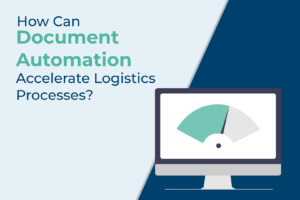Imagine a world where every book had to be copied by hand, before being distributed to the reader. This was the reality before the invention of the printing press. The invention of the printing press transformed the world of literature, making books more accessible and affordable to a wider audience. This breakthrough innovation not only created new jobs in the publishing industry but also increased literacy rates among the general population.
Similarly, traditional workflows have always relied heavily on manual processes. Processes like data entry and paper-based record keeping, are time-consuming, error-prone, and prevent workers from utilizing their full skill set. These processes are incredibly frustrating and often lead to burnout, as workers feel stuck performing menial tasks that do not require their full attention.
According to a report by McKinsey & Company, up to 45% of tasks that workers are currently paid to perform can be automated. This means that automation has the potential to allow workers to focus on tasks that require a mix of technical and soft skills which are more challenging and satisfying.
75% of enterprises have been facing challenges related to internal user adoption and headcount. On the contrary, automation is not about replacing jobs, but enhancing skills and driving business growth. Although it may seem overwhelming at first, automation is not difficult to adapt to, and many user-friendly solutions can be easily integrated into existing processes.
The process of digital transformation is discussed in more depth in this blog.
By enabling employees to focus on more important tasks, automation allows the workforce to be strategic. Additionally, automation can help gather accurate data for future processes and track processes and systems better. In the finance sector, it can reconcile and close books faster while focusing on accuracy, and the workforce can avoid the hassles of constant reminders and waiting for approvals.
The need for the rise of automation
The rise of automation is driven by the need for businesses to become more efficient, productive, and competitive. As customer demands increase and the pace of business accelerates, companies must find ways to streamline processes and eliminate inefficiencies such as:
- Demands for greater efficiency and productivity due to increased competition and market pressures.
- Human limitations, such as errors, fatigue, and the need for breaks, lead to decreased productivity. Furthermore, the problems due to law limitations on hours worked, unforced errors, and the well-being of human counterparts are primary concerns.
- The need for cost reduction and optimization, to maximize profit margins.
- The potential to enhance worker satisfaction and engagement through automation, while preparing for future technological advancements.
Gradually introducing automation can help employers who are unsure about its acceptance in their company. Gaining consensus, providing training, demonstrating the proof of concept, and ensuring user buy-in are crucial steps in emphasizing that this solution is designed to alleviate workloads and eliminate stress. This approach will be met with enthusiasm from their workforce as they have time to be included in the process and adapt to it. With the benefits of automation becoming increasingly apparent, it has become a necessary tool for companies to remain relevant and competitive in today’s fast-paced business landscape.
While there are several factors that demonstrate the benefits of automation, it is important to remember that adopting automation without proper planning and analysis might not yield the desired return on investment (ROI). In fact, according to Deloitte’s survey, two of the top three challenging barriers to successful automation implementation are a lack of skills and experience (55%) and an inability to change business processes or ways of working (52%).
How automation drives business growth
Adopting automation can expedite an organization’s goal to attain optimal efficiency levels, resulting in benefits such as cost savings, faster time-to-market, and greater competitiveness.
Reduction of Employee Dependency
This not only frees up employee time and energy to focus on higher-value tasks but also reduces the risk of delays that can occur when tasks are performed manually.
Skills Enhancement
Automation can provide employees with opportunities to update their skills and knowledge. This can be achieved by offering training programs on the use and maintenance of automated systems. This, in turn, can lead to more competent employees who are better equipped to handle complex tasks and make more informed decisions.
Work-life Balance
Automation can be leveraged to free up employee time and energy, allowing them to pursue more fulfilling work that aligns with their passions and interests. This can lead to improved employee morale and engagement, which in turn can lead to better retention rates and increased productivity.
Automation will drive growth by enabling employees to focus on more important tasks.
- In manufacturing, employees can focus on quality control and process improvement.
- In healthcare, employees can focus on clinical decision-making.
- In finance, employees can focus on data analysis and strategic planning.
- In sales, employees can focus on relationship-building and sales strategy.
Automation technology offers significant benefits for both individuals and businesses and has proven to enhance skills and promote business growth. It is essential to consider the potential advantages of automation and evaluate how it can be integrated into existing processes. While some may find the technology daunting, the latest advancement in IPA and AI/ML have minimized disruptions and increased the chances of adoption and success. This ensures a smoother transition for end-users and encourages greater acceptance of the technology. Taking the time to explore automation technology can lead to new possibilities for work. It can also contribute to a more efficient and productive future. It is important to remain open-minded and consider the many ways automation can improve work processes and enhance overall performance.
So, there you have it! Automation is not about replacing jobs, but enhancing skills and driving business growth. If you have not already, it is time to consider the benefits of automation for your enterprise. Do not be intimidated by the technology many user-friendly solutions can be easily integrated into your existing processes. Take the time to explore automation technology and imagine the possibilities it could bring to your work.


